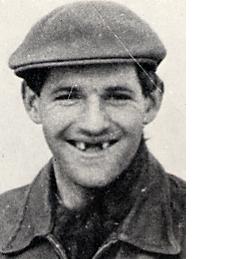Rye’s Oldest Inhabitants
In and around our old town of Rye we have, living here, one of the most highly developed and intelligent communities. They live with one another a free and easy life, having their own councils making their own laws, which are centuries old, choosing, surveying, building, breeding, feeding and dying. They have no taxes and no trade unions, individual is himself that. When they want to build they just pick up a piece of wood and go ahead. They never leave the city they were born in, breedmg and living with their cousins. You may be wondering by now who I am referring to, well, they were here before the Romans, and, last century every big town had their old ancestors, now it is a fortunate town that can boast them and an unfortunate village that cannot. Here is the secret of our oldest inhabitants . . . Rooks
Rooks like to build high up in a tree, well out of dangers reach, preferably in an Elm, and much skill is shown in the selection of the branches on which the foundation of the nest is laid. Firstly the branch must fork sufficiently to grip the bottom twigs firmly and give some side support, to do this it has to be one which is more or less vertical and so as not to sway with the wind, up and down as well as to and fro. Secondly it must not be too stiff and firm it must yield a little, and sway easily for if the branch is too stiff the nest will be blown clean out of the tree. No other branches must rub against it or they too would loosen the nest. Furthermore there has to be a clear space at the top of the nest for the bird to get in and out with ease for she will be hard pressed for time to satisfy her hungry family.
Finally in her choice for a nesting site she appreciates a bough adjacent to the nest on which a bird not engaged with the incubation, can perch and call to his mate.
Many of the rookeries in England are older than anyone can remember and have been in the same trees for generations. Sometimes the rooks desert a certain tree leaving the old nests high up in the topmost branches, the birds making no effort to repair them and no new ones are made. Eventually the winter storms loosen them and send them crashing to the ground below. A few years later the tree is seen to be rapidly dying, the leaves turn yellow before midsummer and gradually the branches decay and fall, then the truth is apparent, but the rooks knew years before because the sap was not rising to the top branches and it was a bad bet to build in it. With no sap the wood gets rigid and does not yield to the wind and with a large nest in it the wind would soon shift it.
Why is it that most town and village rookeries are in the churchyard or the grounds of a large house such as the one at the bottom of Rye Hill. Until quite recently in April or May according to the season the people had a rook shoot when all and sundry whether they could shoot straight, had a gun licence or not, would turn out to shoot unfortunate young rooks that were barely able to fly. Therefore the rooks’ being intelligent birds decided the best place to build was where they were least likely to be disturbed, for poachers are not apt to poach in a churchyard or on the manor doorstep as they might on a rookery a mile or two away from the town. Also the lords planted avenues of elms down the drives and as windbreaks around the house. In the very old days the rook shoot was a very important fixture of the year and only the gentry took part and many a lord banned his workers from carrying a gun in case he shot an adult rook for the pot, in or out of season. The day before the annual rook battles the village lads would creep out at the dead of night and climb the trees to rob the nest of all the young, just to spite the lords. As the old rooks would make such a loud din and arouse suspicion the robbers carried a light with them for, as long as the rooks are able to see a light they keep absolutely quiet.
This month’s introduced species, the house mouse. Introduced to England presumably by the first man to come here from the Continent where he has spread from Asia. Usually he came in man’s baggage along with his food, so when man set up his home in a new place he found he already had a little companion that would share his food and anything else with him. As a mouse is not fussy about what he eats and can also adapt himself to any climate he has now spread all over the world where man has gone.
“Rye’s Own” April 1967
All articles, photographs and drawings on this web site are World Copyright Protected. No reproduction for publication without prior arrangement. © World Copyright 2015 Cinque Ports Magazines Rye Ltd., Guinea Hall
Lodge Sellindge TN25 6EG
